Discover the delightful flavors of Coconut Chutney, a classic South Indian condiment! This recipe combines freshly grated coconut, green chilies, and aromatic spices for a creamy and versatile side dish. Perfect with Dosa, Idli, vada, or as a tasty dip for snacks!
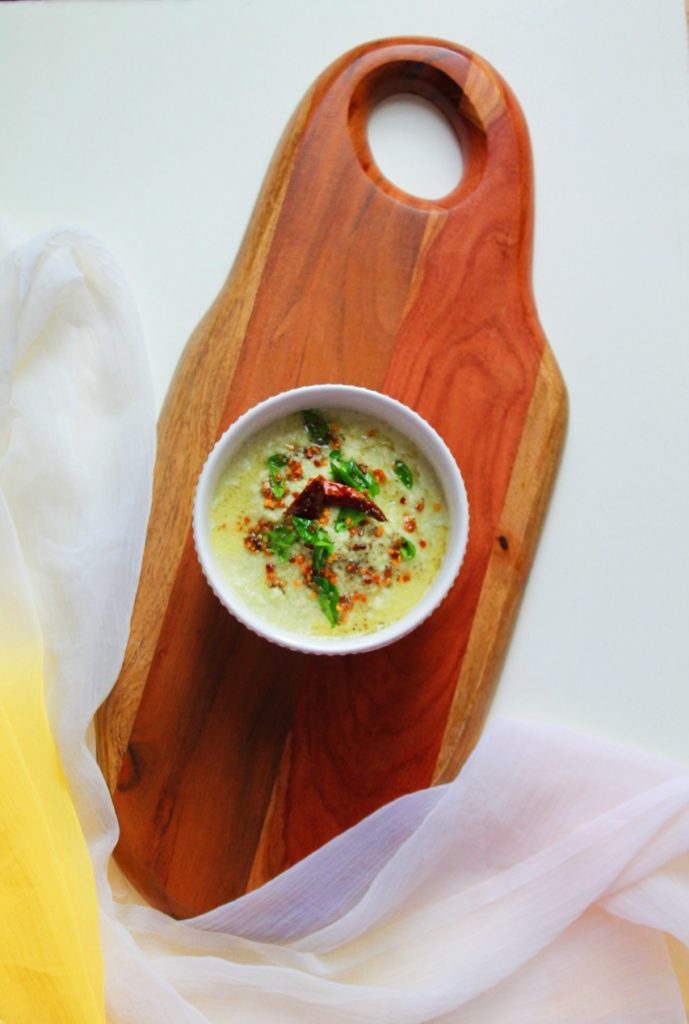
Coconut chutney is a luscious and creamy condiment that brings a tropical touch to your taste buds. This delightful side dish is a staple in South Indian cuisine, known for its vibrant flavors and simplicity. The primary ingredient, freshly grated coconut, imparts a natural sweetness and a rich, nutty taste that complements the spiciness of the other ingredients.
The chutney's main ingredient is freshly grated coconut, which gives it a rich and tropical taste. Coconut is known for its natural sweetness, and this sweetness is well-balanced with the spiciness of green chilies, making the chutney mildly tangy and pleasantly aromatic. The combination of these flavors creates a unique and addictive taste that tantalizes the taste buds.
To add depth and thickness to the chutney, some recipes include roasted chana dal (split chickpeas) or roasted peanuts. These ingredients not only enhance the texture but also provide a subtle nutty flavor that complements the coconut.
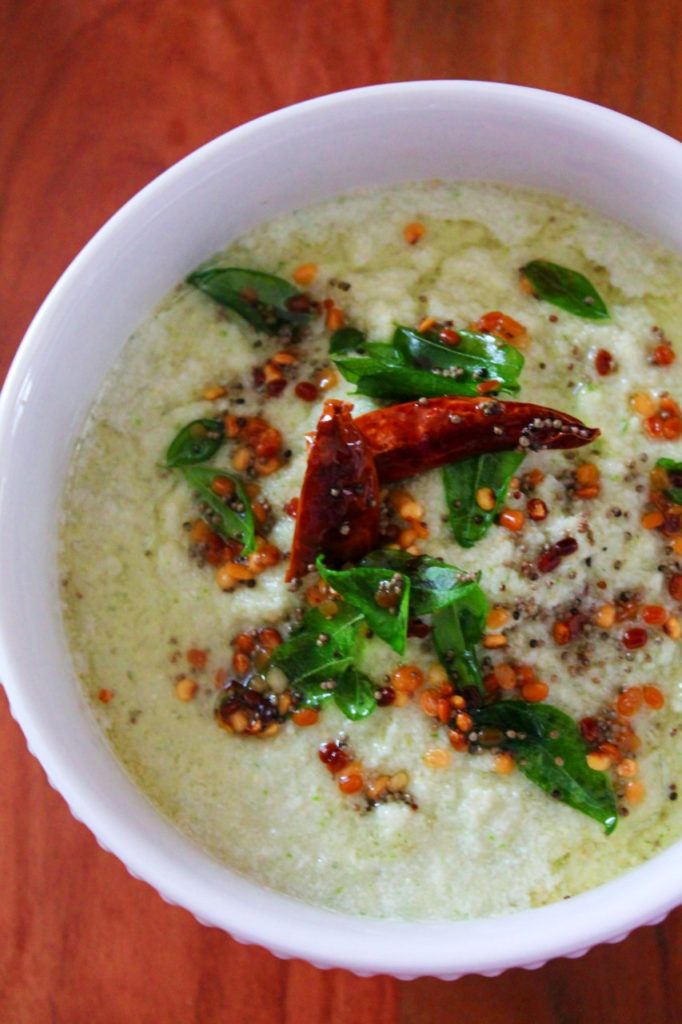
The spiciness of the chutney can be adjusted according to personal preferences. Using green chilies allows for customization, so you can add more or fewer chilies to achieve your desired level of heat.
To provide a zesty touch, tamarind paste or lemon juice is often included. This sour element not only enhances the taste but also helps to balance the natural sweetness of the coconut.
The vibrant green color of the chutney, adorned with specks of fresh coriander leaves (cilantro), is visually appealing and complements the colorful South Indian dishes it accompanies.
In some variations, a tempering (tadka) is added to the chutney. The tempering consists of mustard seeds, curry leaves, and dried red chilies sizzled in hot oil, infusing the chutney with an additional layer of aroma and flavor.
Coconut chutney is not only a delightful accompaniment for South Indian breakfast items like dosa, idli, and vada, but it also complements other Indian snacks and even main dishes. It's a versatile condiment that can elevate the taste of various foods.
Jump to:

Ingredients For Coconut Chutney Recipe
Here's a description of the main ingredients used in coconut chutney:
- Freshly grated coconut: Coconut is the star ingredient of the chutney. Freshly grated coconut has a creamy texture and imparts a natural sweetness to the chutney.
- Green chilies: Green chilies add spiciness and heat to the chutney. They come in various varieties, and the level of spiciness can be adjusted based on personal preference. These chilies not only provide a pleasant kick but also balance the sweetness of the coconut, creating a well-rounded flavor profile.
- Ginger: Ginger adds a warm and earthy flavor to the chutney. It has a slightly pungent taste and offers a zesty undertone, enhancing the overall taste of the condiment.
- Roasted chana dal (split chickpeas) or roasted peanuts: These optional ingredients are used to add thickness and texture to the chutney. Roasted chana dal has a nutty flavor, while roasted peanuts provide a rich and slightly sweet taste, contributing to the chutney's complexity.
- Fresh coriander leaves (cilantro): Coriander leaves are known for their refreshing and citrusy flavor. They add a burst of freshness and bright green color to the chutney, making it visually appealing and enhancing its taste.
- Tamarind paste or lemon juice: Tamarind paste adds a tangy element to the chutney, giving it a slightly sour taste that complements the other flavors. Alternatively, lemon juice can be used for a similar tangy effect.
- Salt: Salt is a basic seasoning used to enhance the overall taste of the chutney and bring out its flavors.
- Water: Water is used to adjust the consistency of the chutney. The quantity of water can be varied to achieve the desired thickness and creaminess.
For tempering (optional):
- Vegetable oil or coconut oil: The oil is used for tempering the chutney and brings a subtle richness to the dish.
- Mustard seeds: Mustard seeds are commonly used for tempering in Indian cuisine. When heated in oil, they release a nutty flavor and add depth to the chutney.
- Curry leaves: Curry leaves have a distinct aroma and flavor that complements the coconut chutney wonderfully.
- Dried red chilies: Dried red chilies are added to the tempering for a mild spiciness and a beautiful reddish hue.
These ingredients come together to create a flavorful and aromatic coconut chutney that is loved by many and is a quintessential part of South Indian cuisine.
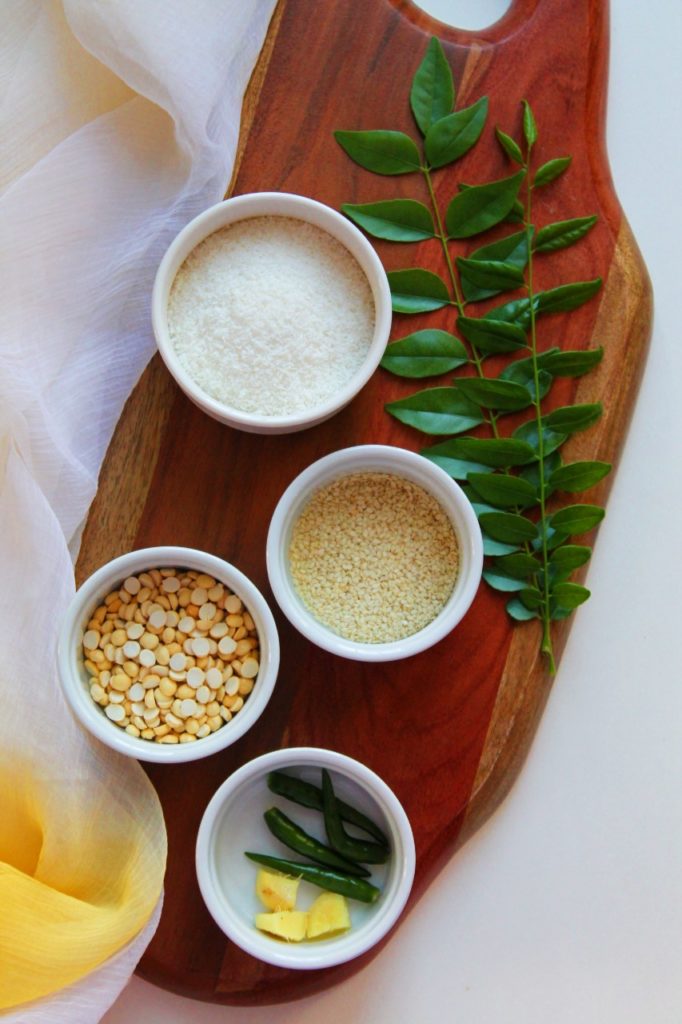
How To Make Coconut Chutney
Here's a simple and classic recipe for coconut chutney:
- In a blender or mixer grinder, add the grated coconut, green chilies, ginger, roasted chana dal (or roasted peanuts), fresh coriander leaves, tamarind paste (or lemon juice), and a pinch of salt.
- Add a little water to the mixture and blend until you get a smooth and creamy consistency. You can adjust the water quantity based on your desired thickness of the chutney.
- Taste the chutney and adjust salt and spiciness according to your preference.
- If you want to add tempering to enhance the flavors, heat the vegetable oil in a small pan. Add mustard seeds, curry leaves, and dried red chilies. Let the mustard seeds splutter and the curry leaves turn crispy. Then, pour this tempering over the coconut chutney and mix well.
- Serve the coconut chutney alongside dosa, idli, vada, or any other South Indian snack of your choice.
The coconut chutney can be stored in the refrigerator for a few days. Just make sure to keep it in an airtight container.
Enjoy the delectable coconut chutney to add a burst of flavor to your favorite Indian dishes!
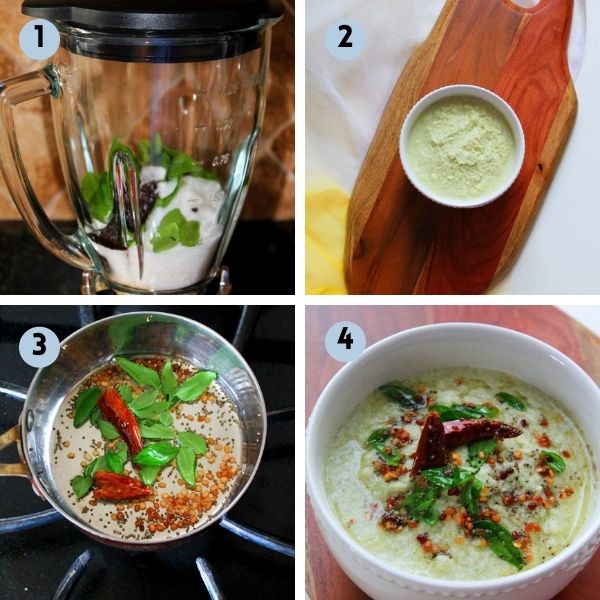
Substitutions
If you're looking to make coconut chutney but don't have all the listed ingredients, here are some possible substitutions you can consider:
- Freshly grated coconut: If you don't have fresh coconut, you can use frozen grated coconut or desiccated coconut. However, keep in mind that fresh coconut provides the best flavor and texture for the chutney.
- Green chilies: If you prefer a milder chutney or don't have green chilies on hand, you can use red or yellow bell peppers for a subtle sweetness and color. Alternatively, you can use a dash of chili powder or cayenne pepper for spiciness.
- Ginger: If you don't have fresh ginger, you can use dried ginger powder (ground ginger) as a substitute. However, fresh ginger provides a more vibrant flavor, so it's best to use it if possible.
- Roasted chana dal or roasted peanuts: If you want a nut-free version or don't have these ingredients, you can omit them altogether. The chutney will still taste delicious, but it may have a slightly thinner consistency.
- Fresh coriander leaves (cilantro): If you don't have cilantro or prefer a different herb, you can use mint leaves for a unique twist on the traditional chutney flavor.
- Tamarind paste or lemon juice: If you don't have tamarind paste, you can use a yogurt for tanginess. Alternatively, you can increase the amount of lemon juice for a similar effect.
- Vegetable oil or coconut oil (for tempering): If you don't have these oils, you can use any neutral-flavored oil like sunflower oil or canola oil for tempering.
- Mustard seeds, curry leaves, and dried red chilies (for tempering): If you don't have these tempering ingredients, you can skip the tempering step altogether. However, the tempering adds an extra layer of flavor, so if possible, it's worth including
Variations
Coconut chutney is a versatile condiment, and there are numerous variations you can try to customize the flavors to your liking. Here are some popular variations of coconut chutney:
- Peanut Coconut Chutney: Replace roasted chana dal with roasted peanuts to give the chutney a nutty and slightly sweet flavor.
- Mint Coconut Chutney: Combine fresh mint leaves with coconut for a refreshing and herbaceous version of the chutney.
- Coriander Coconut Chutney: Use a generous amount of fresh coriander leaves (cilantro) to create a vibrant and fragrant green chutney.
- Sesame Coconut Chutney: Roast sesame seeds and blend them with coconut to impart a nutty taste to the chutney.
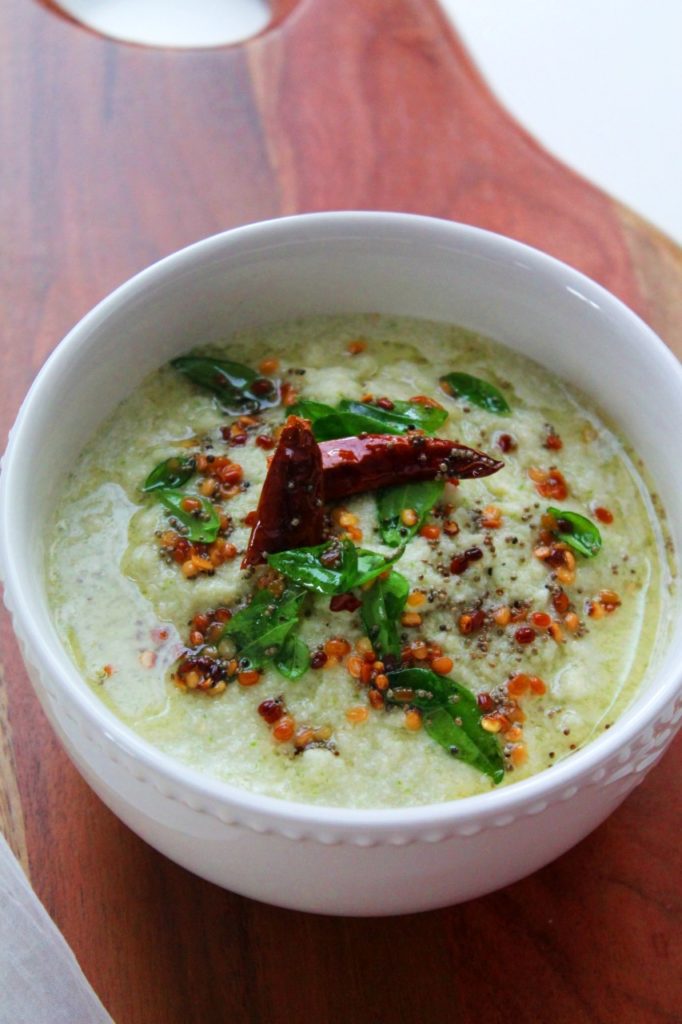
Storage
Here are few tips for storing coconut chutney:
- Refrigeration: Coconut chutney should be stored in an airtight container and kept in the refrigerator.
- Airtight container: Transfer the chutney to a clean, dry, and airtight container immediately after preparation. Make sure the container is tightly sealed to prevent air from getting in and causing the chutney to spoil faster.
- Use a clean spoon: When serving the chutney, always use a clean and dry spoon to avoid contaminating it with moisture or other food particles.
- Consume within a few days: Coconut chutney is best consumed within 2 to 3 days of preparation. While it may remain safe to eat for a slightly longer period, its taste and freshness may diminish over time.
- Freezing (optional): If you have a large batch of coconut chutney and won't be able to finish it within a few days, you can freeze it for later use. Transfer the chutney to a freezer-safe container, leaving some space for expansion, and freeze it. Thaw the chutney in the refrigerator when you're ready to use it. However, note that the texture and taste of the chutney may slightly change after freezing.
- Check for spoilage: Before using leftover chutney from the refrigerator, inspect it for any signs of spoilage, such as mold, off odors, or off colors. If you notice anything unusual, discard the chutney immediately
Tips Coconut Chutney For Idli
Here are some helpful tips for making delicious coconut chutney:
- Use fresh coconut: Whenever possible, use freshly grated coconut for the best taste and texture. Fresh coconut has a natural sweetness and creaminess that enhances the chutney's flavor.
- Adjust spiciness: The spiciness of the chutney can be adjusted according to your preference. You can add more or fewer green chilies or use milder varieties if you prefer a less spicy chutney.
- Soak tamarind: If you are using tamarind, soak it in warm water for a few minutes to soften it before blending. This will make it easier to extract the tamarind juice and incorporate it into the chutney.
- Blend to the desired consistency: Depending on your preference, you can blend the chutney to a smooth or slightly coarse consistency. Adding more or less water will determine the thickness of the chutney.
- Serve fresh and at room temperature: Coconut chutney is best enjoyed fresh and at room temperature. If refrigerated, allow it to come to room temperature before serving to enhance its flavors.
- Pair with complementary dishes: Coconut chutney goes exceptionally well with various South Indian dishes like dosa, Rava Idli, vada, upma, and pongal. It can also be a great accompaniment for snacks, sandwiches, and kebabs.
- Use as a dip or spread: Aside from serving it with traditional Indian dishes, you can use coconut chutney as a dip for vegetable sticks, chips, or crackers. It can also be used as a spread for sandwiches and wraps.
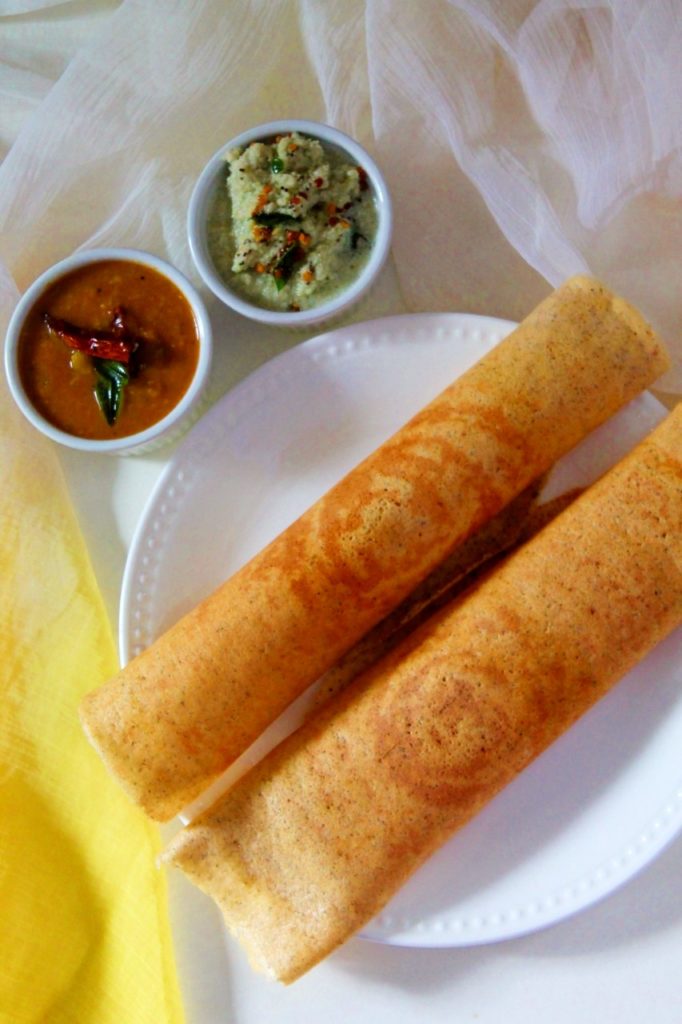
FAQ
Coconut chutney is made primarily from freshly grated coconut blended with green chilies, ginger, tamarind or lemon juice, and seasoned with salt. It may also include roasted chana dal or roasted peanuts for added thickness and flavor.
Coconut chutney is an excellent condiment for enhancing the taste of various South Indian dishes like dosa, Quinoa Idli, Rava Idli, vada, and upma. It also serves as a flavorful dip or spread for snacks, sandwiches, and other dishes, adding a tropical and refreshing twist to the meal.
Coconut chutney can be considered healthy when consumed in moderation. It contains the nutritional benefits of coconut, which provides healthy fats and essential nutrients
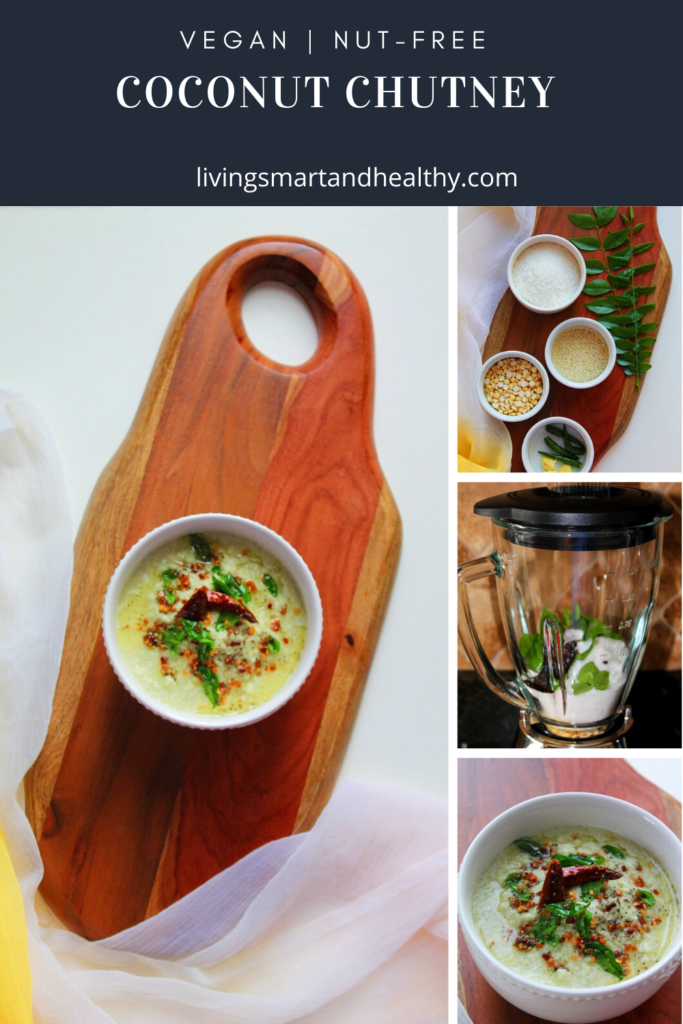
Serving

Coconut Chutney Recipe [Coconut Chutney Dosa]
Ingredients
INGREDIENTS FOR COCONUT CHUTNEY
- ¾ cup coconut, grated fresh, frozen or desiccated coconut
- ¼ cup roasted chana dal
- 2 tablespoon sesame seeds
- ½ tablespoon tamarind pulp (optional)
- 2-3 green chili, adjust to taste
- ½ inch ginger
- 1-2 sprigs curry leaves (optional), fresh or dry
- salt to taste
FOR TEMPERING
- ½ teaspoon mustard seeds
- 1 teaspoon urad dal
- ⅛ teaspoon asafoetida
- 1-2 dry whole red chili
- 1 sprig curry leaves, fresh or dry
Instructions
- Add all the ingredients for chutney into a blender jar – coconut, roasted chana dal, sesame seeds, ginger, green chili, tamarind pulp, curry leaves, salt to taste, and some water to grind.
- Add water as needed to blend the chutney to a smooth consistency. Remove the chutney into a serving bowl.
FOR TEMPERING
- Heat some oil in a pan, when the oil is hot, add mustard seeds, and let the seeds splutter.
- Reduce the heat to low, add urad dal, asafoetida, whole red chili, and curry leaves, and saute for a minute or so or until the urad dal turns light brown.
- Turn off the heat, and add the tempering over the chutney. Mix well. Enjoy!
Notes
Nutrition
Disclaimer
Nutrition values are my best estimates. If you rely on them for your diet, use your preferred nutrition calculator.

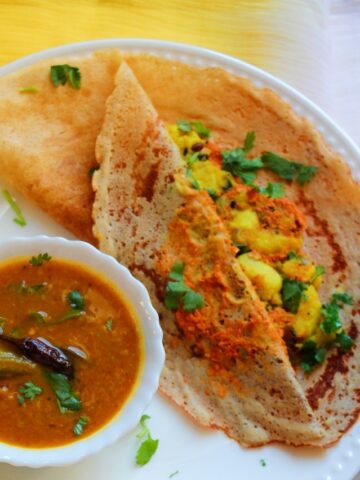
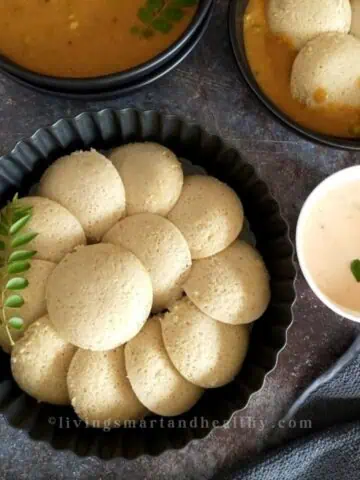
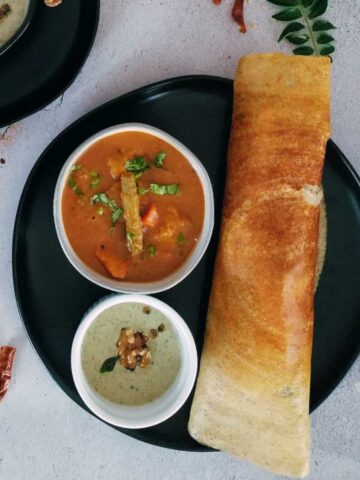

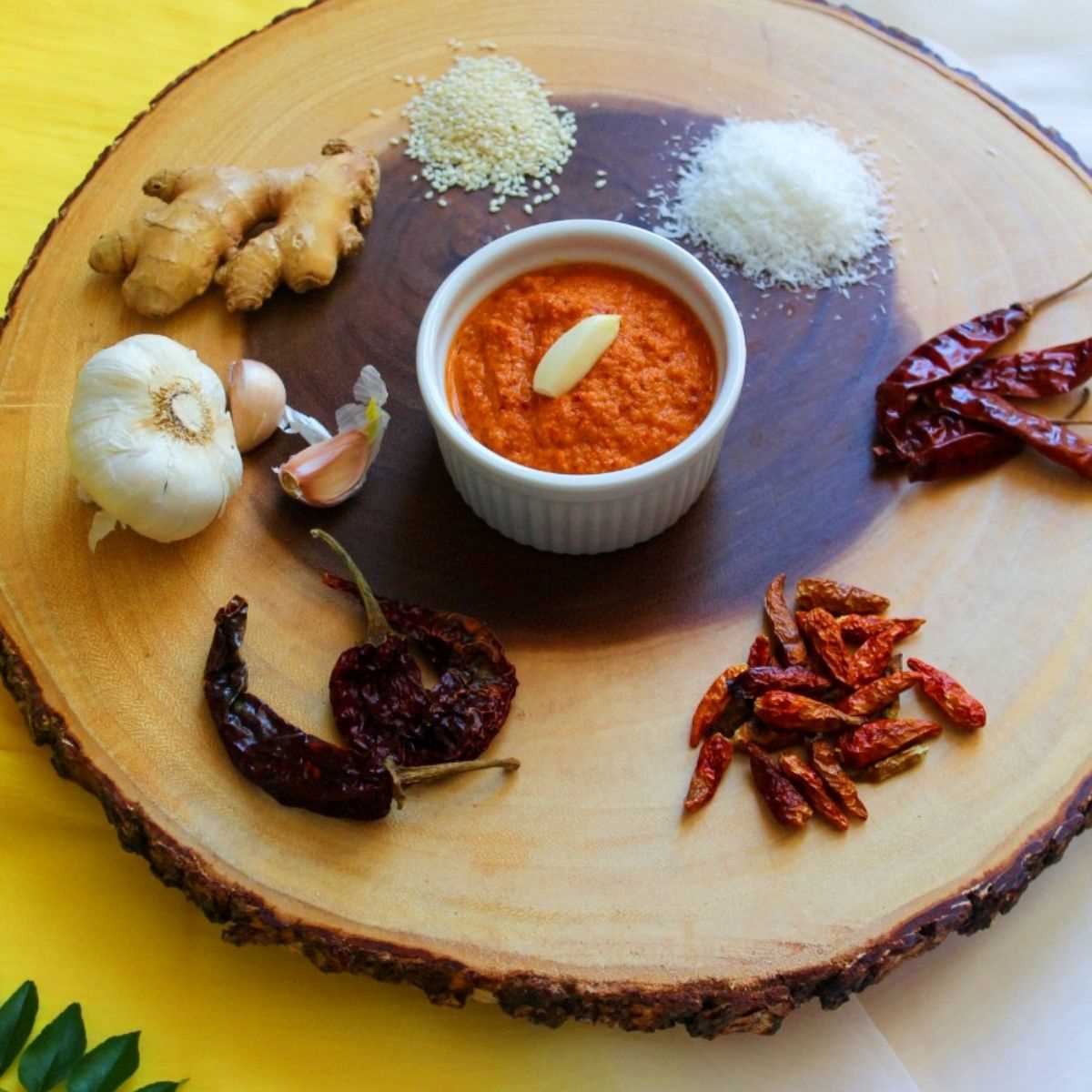
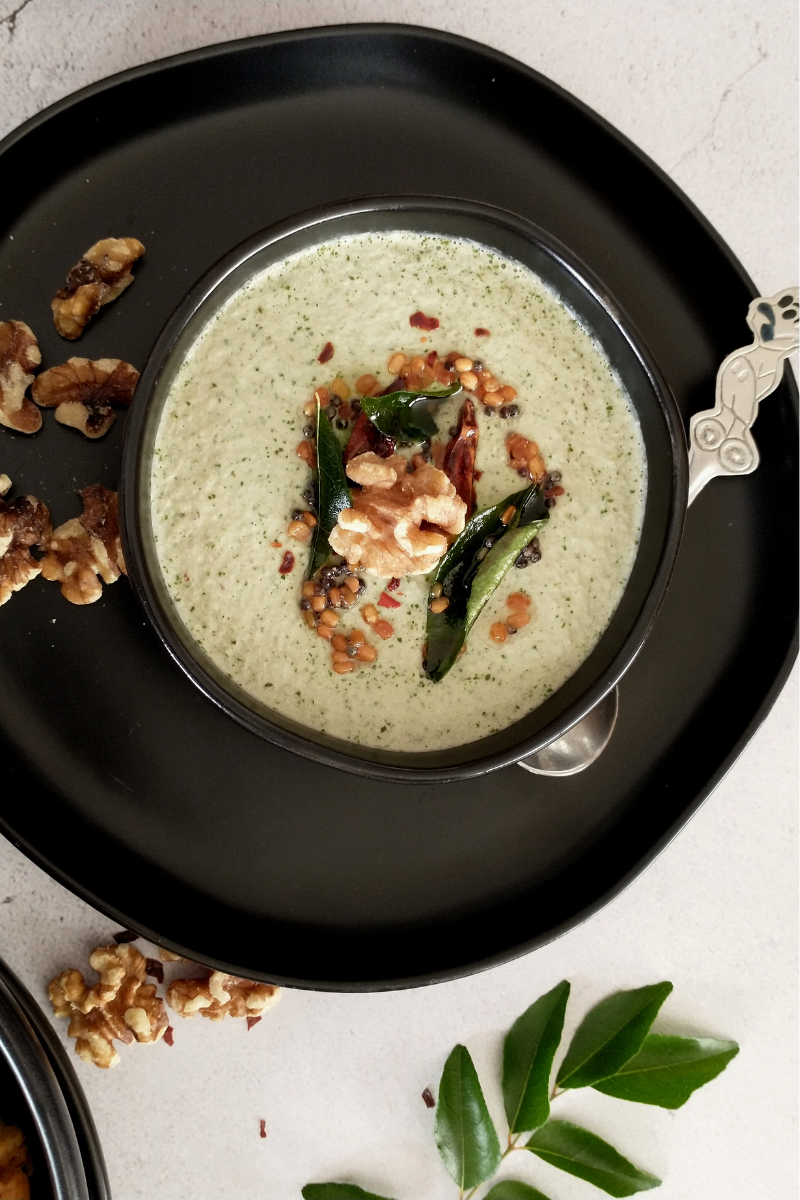
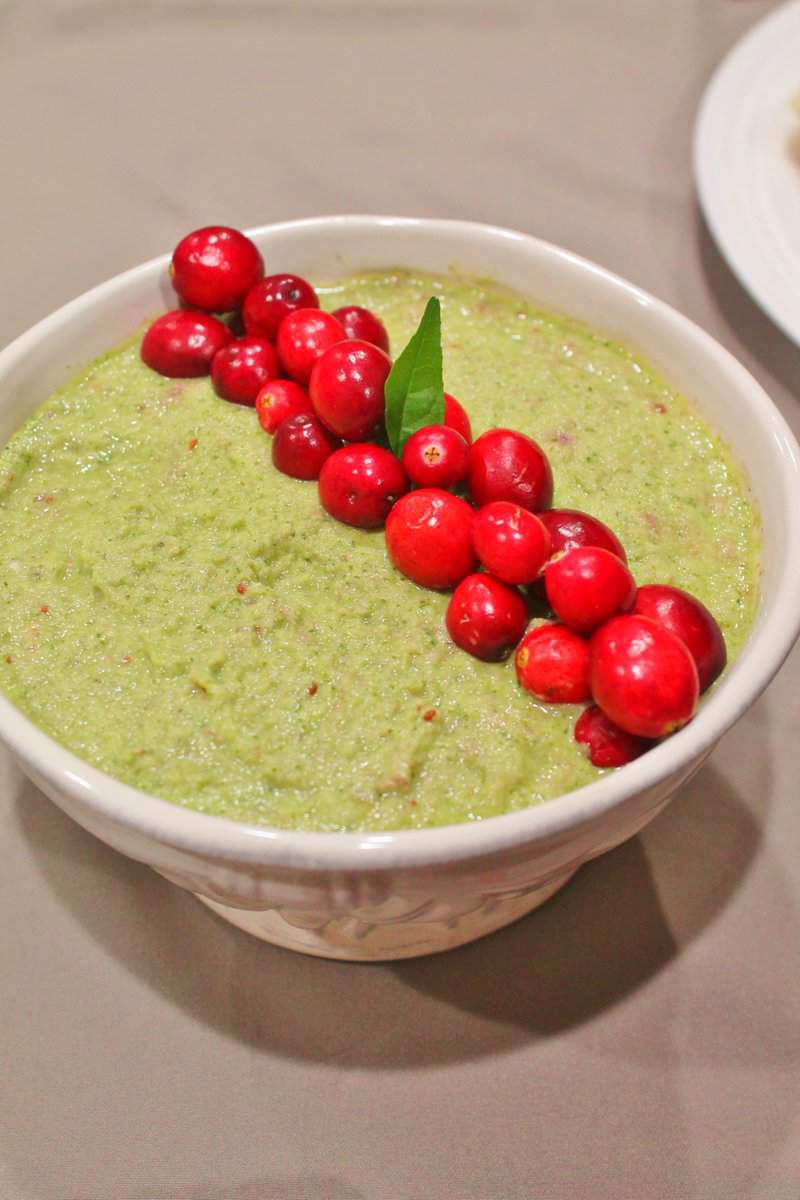
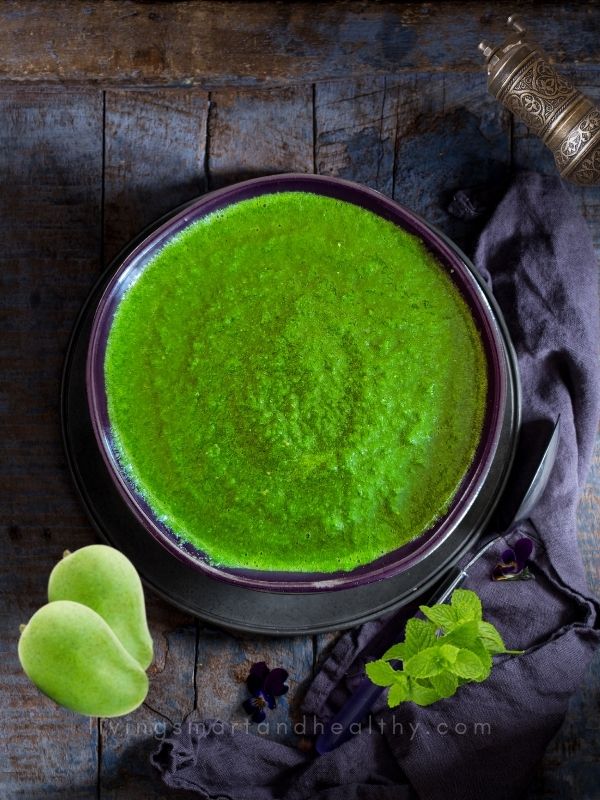
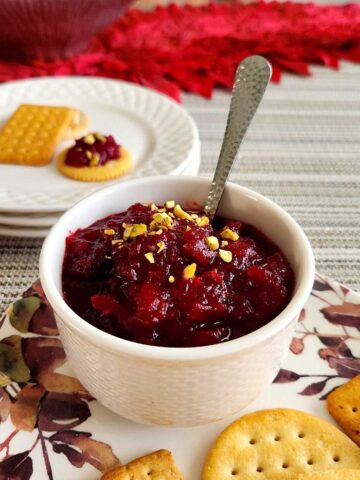
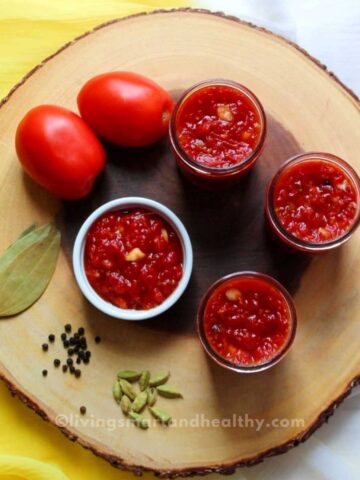
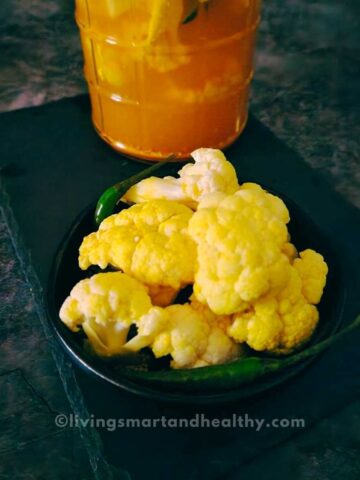

Leave a Reply
You must be logged in to post a comment.